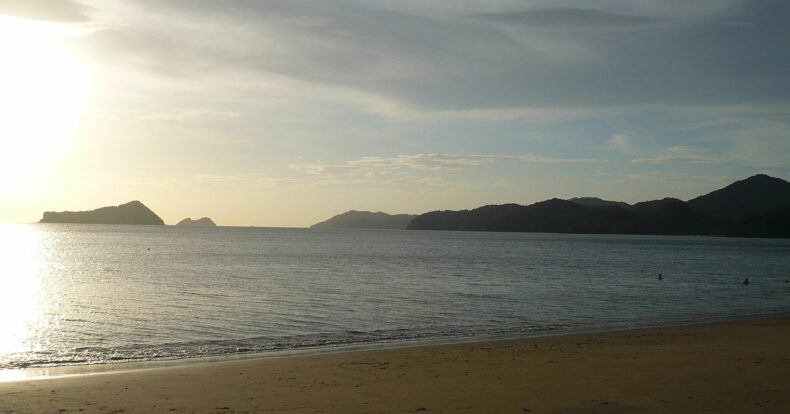Red Tide in the Pacific Coast of Costa Rica

The Director General of Civil Protection issues a red alert for the presence of red tide in the Pacific coast of Costa Rica, based on reports from the Ministry of Environment and Natural Resources, CENDEPESCA and recommendations from the Ministry of Health.
What is Red Tide?
Red tide is a term used to refer to an increase in the population of certain types of microscopic algae. These algae contain toxins that can be harmful to animals and humans, and even cause death.
This is caused by the proliferation of marine plankton, which are tiny organisms that live in the sea and are part of the food chain. When there are more plankton than normal, they produce more toxins that can kill fish and other marine species.
The microorganisms that cause red tide are important for the feeding of sedentary invertebrates whose feeding mechanisms are by deposition and filtration, such as oysters, clams or even shells, among others. However, due to the incidence of various climatic factors, they tend to multiply and generate toxins in their environment to delimit a vital space that keeps away competition for food with other marine species.
Damage to Ecosystems
Red tide is a type of seaweed that produces substances toxic to animals and humans. The most common species of red tide is the dinoflagellate Karenia brevis, which can produce harmful neurotoxins such as saxitoxin and domoic acid. These neurotoxins can be found in shellfish and other marine species that feed on algae, as well as on the surface of the water.
When animals ingest these toxins, they risk death or poisoning. The most common victims are turtles, which eat large quantities of algae-covered shellfish and then become trapped in red tides while at sea.
However, this is not new in Costa Rica. The first documented case was in 1936 when it was noticed off the coast of Puntarenas. Since then, it has been observed to recur every year between December and April. In fact, in 2018, its occurrence was observed to have a higher frequency and intensity along the Pacific coast, compared to other coastal areas.
Its effect along the Pacific coast of Costa Rica is a danger to ecosystems and can cause alterations to them. It can also cause damage to the tourism and fishing industries due to its effects on marine life. Although the government has taken measures to try to mitigate its effects, fears remain that this will not be enough if the red tide persists.

Causes of Red Tide this Year
This year, due to the La Niña phenomenon that took place along the Costa Ballena, there was a strong period of above-normal rainfall. Information projected in March by the National Weather Institute. These heavy rains caused an increase in agricultural runoff, including chemical fertilizers from the Terraba River watershed, which includes Rio General and Rio Cotu Brus. These runoffs flowed into the coastal ocean waters from the northwest corner of the Osa. This created an overabundance of nutrients, or eutrophication, which in turn triggered the red tide.
On the other hand, a new study by the University of Costa Rica reveals that the red tide has spread more than 3,000 kilometers along the Pacific coast and is expected to reach as far as Nicaragua.
In addition, at least 12 dead black turtles have been discovered on Osa beach. This has only increased the alarm and urgency felt by conservationists and scientists as the apparent impact of red tide continues to be documented.
In Summary
- Red tide is a type of algal bloom that can be found in ocean and coastal waters. It is caused by an increase in the population of certain types of algae that produce toxic chemicals called “heterotoxins”.
- Red Tide has been a problem along the Pacific coast of Costa Rica for decades. The first documented case was in 1936 when it was noticed off the coast of Puntarenas.
- The red tide has spread more than 3,000 kilometers along the Pacific coast and is expected to reach as far as Nicaragua.
Author
Zelda Walters for Sensorial Sunsets
Bibliography
https://www.proteccioncivil.gob.sv/2022/01/27/alerta-roja-por-marea-roja-27-enero-2022/
https://www.ucr.ac.cr/noticias/2020/09/25/mareas-rojas-que-son-y-por-que-se-producen.html
Navigate articles





